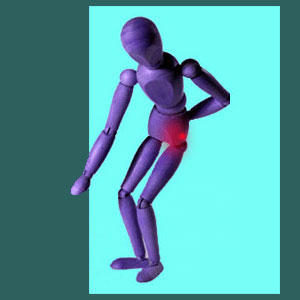
Sacroiliac pain walking is another very often seen symptom of many different SIJ disorders. Walking increases stress on the sacroiliac and can be painful, especially when the weight of the body rests completely on the affected side during the course of a typical stride forward. While walking on a flat surface can be very painful, walking on inclines and steps can magnify this suffering exponentially. These circumstances really increase the load on the affected SI joint, often creating acute pain that can immediately stop any patient in their tracks.
Walking is one of life’s most basic physical tasks. Without the ability to walk, patients can not perform to their full potential and may not be able to work at all. The collateral consequences of the inability to move round are many and dramatic, including decreased metabolism, weight gain, muscle atrophy and many specific, significant health threats.
This article explores why patients suffer pain when walking and how these symptoms can be managed.
Sacroiliac Pain Walking Expressions
Walking-related sacroiliac pain is virtually always unilaterally experienced. Symptoms tend to express themselves quickly and increase in severity as long as the patient continues to walk. Often, symptoms are just as bad when standing, especially after walking for some distance. When climbing stairs, walking downhill or walking uphill, symptoms will be aggravated and might lead to completely disabling pain and weakness in the affected joint.
Expressions of walking-related pain will vary from patient to patient and might be dull or sharp in nature. Symptoms will usually be predictable, hurting each time the patient performs the activity once they reach a chronic pattern. However, occasional worse flare-ups are still not out of the ordinary and might force patients into bed to rest until the worst discomfort passes.
SIJ Pain When Walking
When walking, there are times during the normal stride forward where the sacroiliac holds the entire body weight at the exact same time of flexing to accommodate the forward momentum of the torso while the leg stays planted for balance. This is the most stressful aspect of movement for SIJ pain sufferers.
Walking seems like a simple task, but actually uses much energy from our bodies, in a combined effort of muscles, connective tissues, skeletal stability and neurological instruction. When any aspect of this chain is broken due to weakness, the entire process of mobility begins to suffer dysfunction. This is why so many patients with severe walking-related SIJ pain begin to experience other symptoms as well, including postural problems, foot pronation issues, hip pain, knee pain or ankle pain on the “good side” and other potential expressions. These additional symptoms are caused by compensatory movements, postures and activity avoidance tactics that are consciously and unconsciously utilized by the patient in an effort to minimize their SI joint discomfort.
Sacroiliac Pain Walking Solutions
It is easy to tell a patient not to walk, but in practical terms this is like telling them not to live. People can not take to bed or a chair for the rest of their days without significant lifestyle and environmental modifications. This is why activity avoidance is a path that is much fraught with danger, since patients might find themselves on one-way streets leading towards fast-approaching disability if they wait too long in pursuing curative interventions.
It is vital to seek out qualified diagnosis and remember the simple fact that most SI joint disorders can only be diagnosed subjectively and via process of elimination. Therefore, patients are advised to give themselves the time needed to pursue multiple diagnostic opinions before their symptoms become too much to bear and force them into bed.
If a diagnosis has been made and treatment has commenced, or will commence shortly, do everything possible not to exacerbate the pain. Try to walk less often and for less time. Try not to exhaust yourself and end up in dire pain on the occasions when you must walk. However, it is equally important not to surrender to the pain and become completely sedentary. This will cause far more harm than any benefit it may provide in terms of pain relief.
Speak to your physical and occupational therapists about what you can do to stay active and productive while you work towards a sacroiliac cure. You might have to be creative, but be certain to invest yourself in the process of maintaining good health and wellness, since you do not want pain in one small anatomical region to become an overall constitutional crisis that may create permanent threat towards your future health and wellness.
Sacroiliac Joint Pain > Sacroiliac Facts > Sacroiliac Pain Walking





